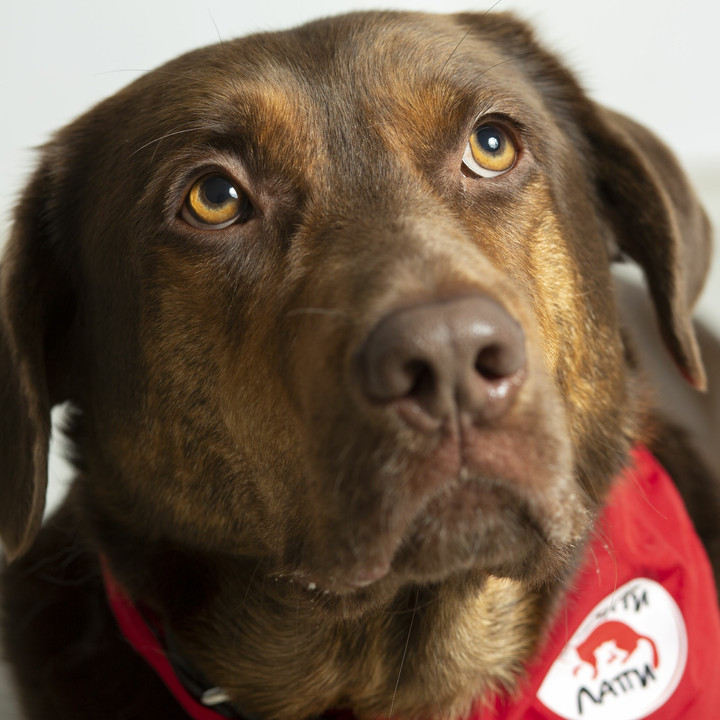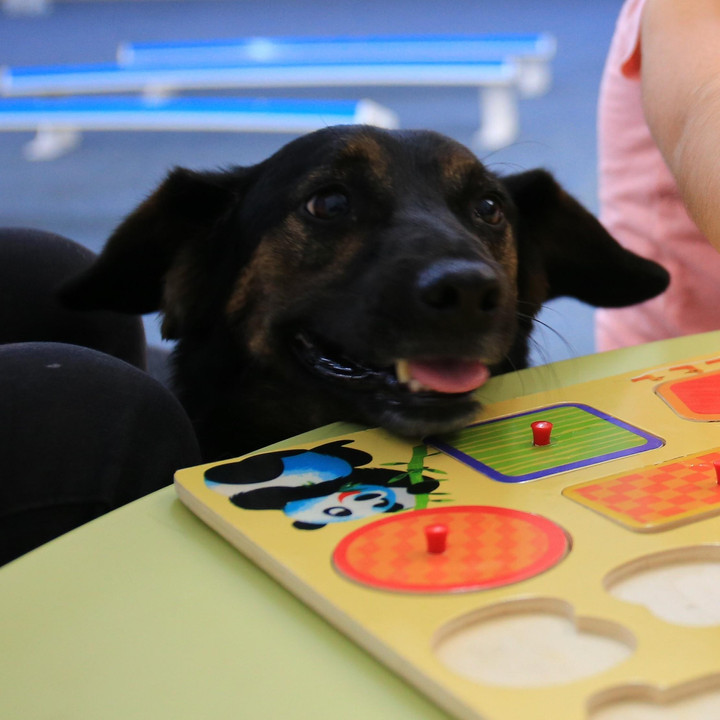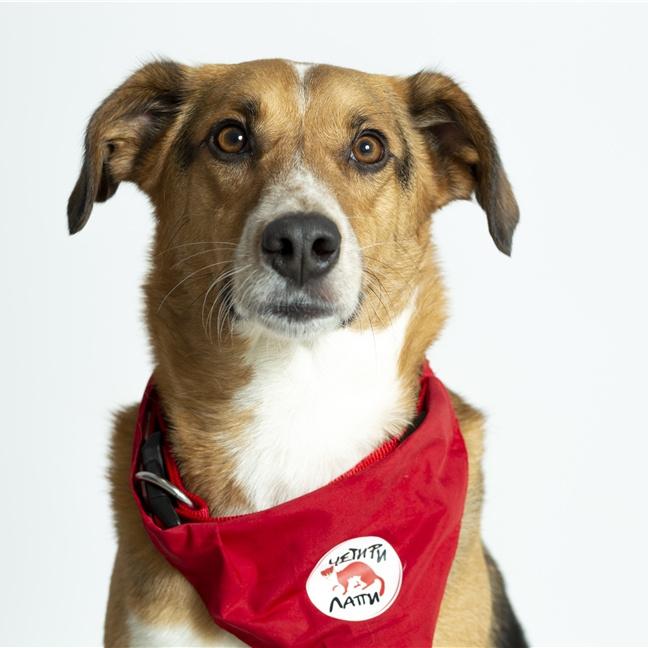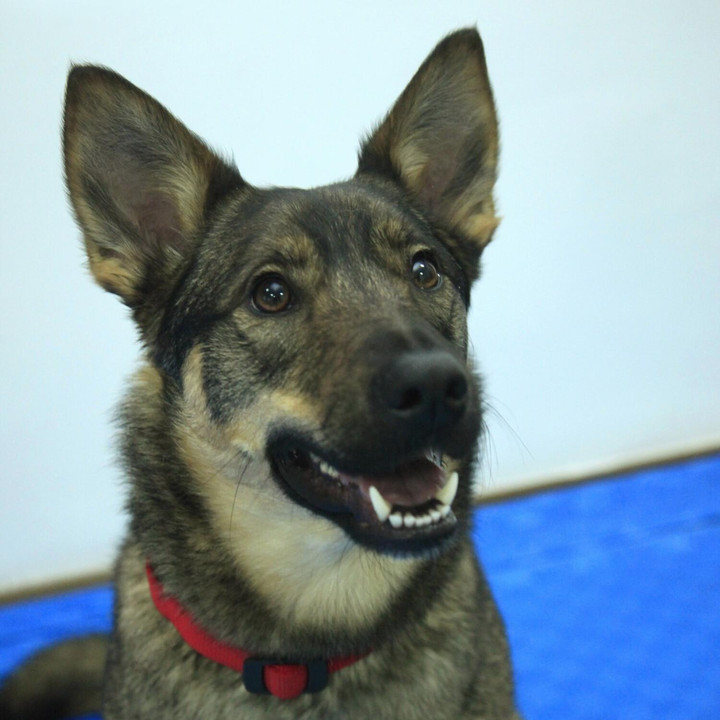
Preparing Dogs for Animal Assisted Interventions
How former stray animals are prepared to become therapy dogs and help people in need
FOUR PAWS has developed its own Quality Standards for Animal Assisted Interventions (AAI) to define, secure, check and continuously improve the quality of our AAI activities, establish the best possible quality of life for the former stray dogs in our care, and operate the programme as effectively and efficiently as possible.
Our priority is the welfare of our dogs, so when it comes to AAI work, we need to ensure that the dog is physically and mentally fit to work in AAI settings.
- Firstly, we need to make sure that we select the right dog for the job!
- Once selected, it is our responsibility to prepare the dog for its role by using welfare-based training methods.
- After approximately 12 months of preparation and training, the dog will be evaluated with respect to health, temperament and behaviour. This is to ensure he or she is ready to start their journey as an AAI dog!

Step 1: Selection
Dogs intended for AAI work need to be carefully selected for suitability to the programme. Attention must be given to the temperament, age, behaviour and physical health of the dog. The process of selecting AAI dogs should be comprehensive to ensure that the selected dog is highly adaptable and predictable in all environments.
► The ideal AAI dog should be friendly, confident, and calm.
► The animal’s response should be predictable when confronted with strangers, other animals, medical equipment, loud and/or novel stimuli, angry voices and/or potentially threatening gestures, crowded environments, and when being patted in a vigorous or clumsy way or restrained in a hug.

Step 2: Training
Training the dog basically consists of three processes: the adjustment period, socialisation and formal training. The adjustment and socialisation period serve as the basis and aim towards developing a trusting relationship and social resilience. The formal training period is about building the necessary training skills for AAI work.
► During the adjustment period, we aim to build a relationship with the dog based on trust. We also give the dog a chance to familiarise itself with its new home and routine. What we want is a dog that is properly socialised and feels comfortable and safe in its everyday life setting when meeting new people and animals and when faced with new situations.
► Once a dog and its handler have developed a trusting bond, the formal training process can begin. During training the focus lies in the development of good manners such as loose lead walking, waiting, calm greetings etc. Furthermore, the dog familiarises with AAI settings and activities and gets used to various types of equipment.

Step 3: Certification
Following a minimum of 12-month training period and upon reaching the minimum age of 18 months, a dog is eligible for certification. The key elements of the assessment are temperament, behaviour, and physical health.
Additionally, it is recommended to evaluate the dog's readiness and capability to work with specific groups or in different roles. In the case where a dog is going to work with children, the evaluation process should ensure that the animal is comfortable and safe around children. It is widely accepted that dog behaviour is context-specific, thus certifications should distinguish what contexts a dog is expected to work within.
Most stray dogs have already formed their responses to various distractions and stimuli. Therefore, much time is needed for behaviour and response correction. Our experience shows that once adopted, former stray dogs need at least four months of adaptation to the new home and positive reinforcement training during this period. Training for AAI sessions continues in the next eight months before the dog takes part in AAI sessions.
Meet our Therapy dogs!

Shoko, AAI Bulgaria
Read Shoko's story here.

Lisa, AAI Ukraine
Read Lisa's story here.

Bumi, AAI Romania

Smiley, AAI Bulgaria
Read Smiley's Story here.

Busia, AAI Ukraine
Read Busia's story here.

Kaya, AAI Bulgaria
Read Kaya's story here.
 Please be careful! If you delete this page, consider that it could be used within an other language version.
Please be careful! If you delete this page, consider that it could be used within an other language version.